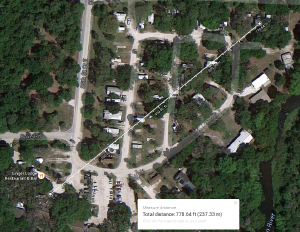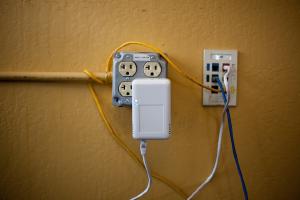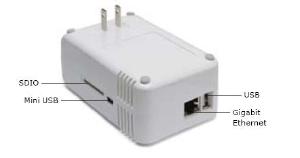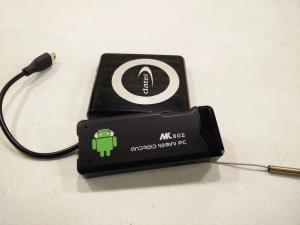–
Every now and then I have the rare treat of geeking out with some of my most technical readers. This is one of those times. LOL I’m kidding, nobody reads this. But anyway, if you don’t understand what I’m talking about here I would recommend hitting Google and figuring things out. Knowing this stuff can earn you lots of money as full time RVers. Everything IT can be done remotely and if you have a formidable IT skillset you are in demand…
Anyway, I happen to own one of these devices bought years and years ago as part of my “failed due to apathy” pool automation business venture. The nice thing here is that we’ve come up with an actual legitimate use of a pwnie versus the rare occasions when someone pays me to penetration test their systems. This device though, as small as it is is a brick. That was then and this is now. These days you can buy a similar computer that is the size of a pack of gum.
This has built in wifi and can take a 32, 64 or even 128GB micro SD card. You can probably guess where we’re going with this.
As it turns out these devices are not exactly huge power hogs. 4 AA batteries rigged up to it can power it for 10-12 hours. I happened to have a Sony PSP battery pack lying around so I used that. I simply chopped up one of my numerous USB cables and soldered it right into the case of the battery to provide power. The inaugural run didn’t work well so I cracked open the case and extracted the antenna. The second run was a marvellous success, downloading 2.5GB in just a few hours. The PSP battery isn’t great though and was pretty dead after a 4 hour run. I’ll probably have to do something bettery for batteries eventually.
There are MANY ways of making this happen so you are really limited only by your imagination. I installed Lubuntu on my old school (original) MK802 system. This is worth probably $20 now. I put in a $4 16GB micro SD card and used a damn near free battery pack for it. If it walks away I simply have to invalidate an ssh key and I’m good to go. So quite simply you boot this thing up with a Linux distro installed on the Micro SD card, and use rsync to sync with your server. I made a script and simply added it to /etc/rc.local and viola, the MK802 boots up and starts trying to download media from my server. My script looks like this
#!/bin/bash<br />
# Trap interrupts and exit instead of continuing the loop<br />
trap "echo Exited!; exit;" SIGINT SIGTERM<br />
# Set the initial return value to failure<br />
false<br />
while [ $? -ne 0 ]<br />
do<br />
sleep 1<br />
i=$(($i+1))<br />
rsync -av --progress --partial --timeout 15 -e myuser@myserver.net:~/sync/* .<br />
done
So that leaves the final 4 concerns:
- What if it walks away? Who cares! It costs less than a month worth of LTE. Invalidate the SSH key and move on. Be ready for this possibility and accept it. Hope it doesn't happen.
- Where can I stash it? Numerous places really. I put mine in our mailbox at the office which about 50 feet from the wifi. You could put it on top of a railing, on top of or behind a soda machine, behind a bush, etc. The key is that as long as nobody sees you toss it and as long as you go pick it up before falling asleep for the evening, most likely nobody will see it and snag it.
- And probably the most important thing - remove your wifi credentials from the device. If you forget and you turn it on when you get home, it will download everything over your own connection. Kind of defeats the point.
- If the wifi has some sort of gateway that you have to accept you'll have to do that manually. I recommend a lapdock which is basically an HDMI screen and USB keyboard/trackpad you can hook up to whatever device (with some adapters). People use these things for Raspberry Pi's for instance. I found one on ebay a long time ago for $20 and it really does the job with these tiny headless boards.
Another way you could do this is with an old cell phone, but somehow I suspect an old cell phone would walk away a LOT more quickly than a $35 SBC with no screen even if they are actually similar value.
Last modified: 18 November, 2015
Created: 13 November, 2015





